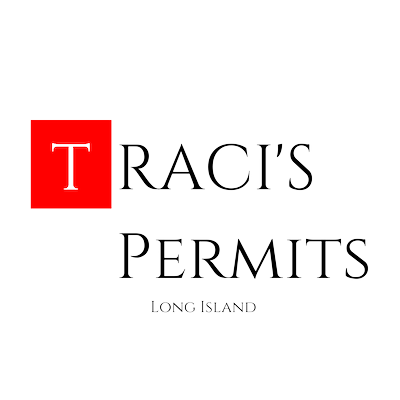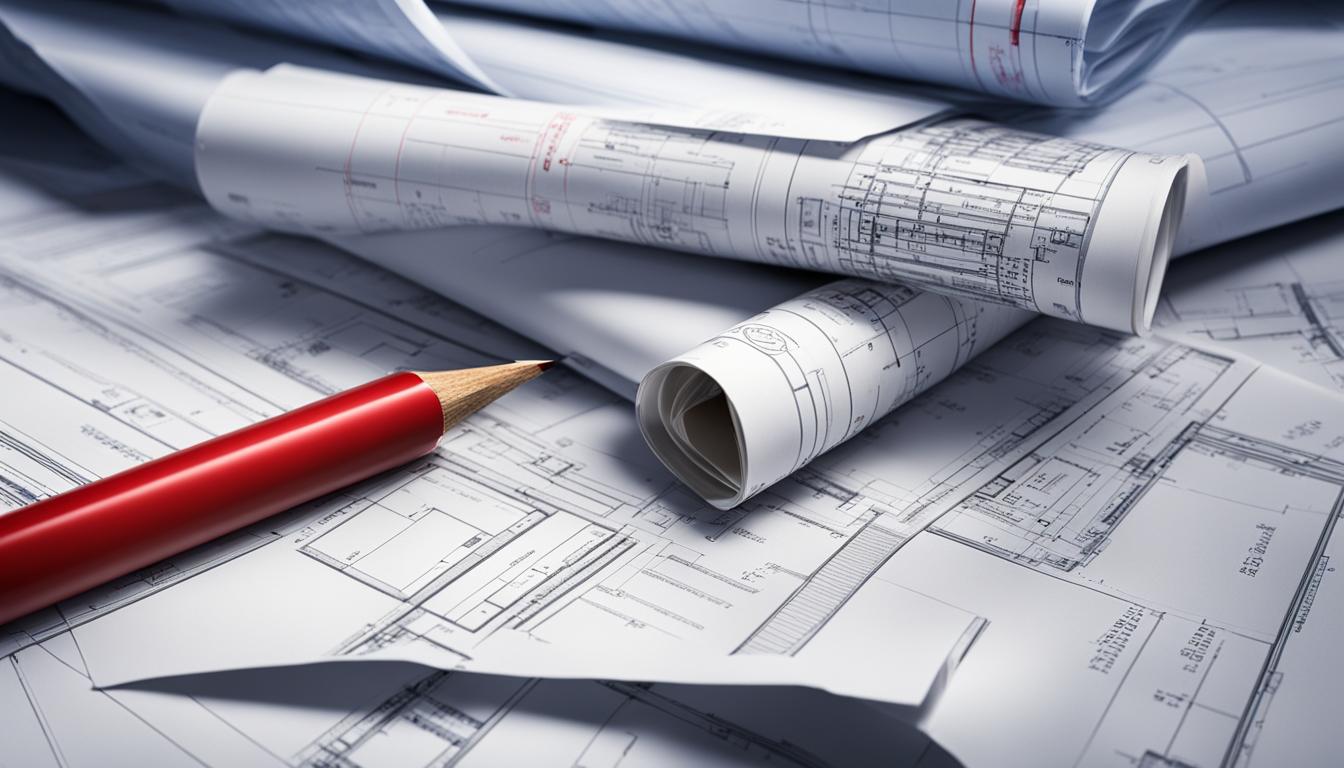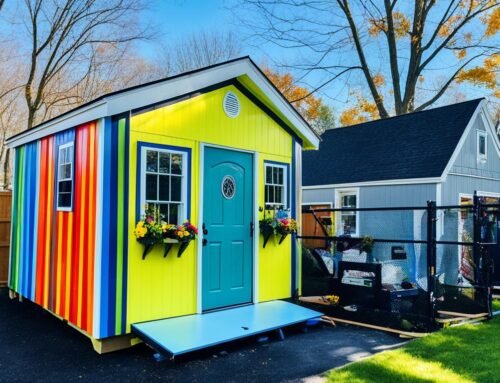Embarking on a home renovation or construction project can be an invigorating prospect. However, before diving into selections of color palettes and materials, understanding the essentials of local building permits is crucial. What is a building permit, you may ask? It serves as your legal passport to commence building operations, ensuring that your project aligns with municipal safety and zoning protocols. But how does one navigate the building permit process? The journey to obtain a building permit commences with a thorough evaluation of your project against local codes, followed by an application, plan submission, and the sequential inspections leading to approval.
If questions loom about the necessity of such permits for your upcoming enterprise, a call or visit to your city’s building and permit office will elucidate whether your project complies with the vital local building permits regulations. This safeguard secures not just personal well-being but also the integrity of the community fabric. Recognition of this step rescues homeowners from future legal entanglements or the devaluation of their most treasured investment—their home.
Thus, gaining explicit clarity on how to obtain a building permit is not merely a procedural step, but a pivotal stride towards responsible homeownership.
Key Takeaways
- Building permits are necessary for most renovation and construction projects, ensuring compliance with standards.
- Homeowners should verify with local authorities whether a permit is required for their specific project.
- The process involves planning, application, and inspections to uphold safety and zoning laws.
- Acquiring a building permit protects the homeowner from legal issues and maintains property value.
- Failing to secure a necessary permit can lead to serious repercussions, including fines or project dismantling.
- Contractors often handle the permit process, but understanding it empowers homeowners.
Understanding the Basics of Building Permits
At the core of any construction or renovation project lies the often-misunderstood concept of a building permit. Building permits explained simply, encompass an array of regulations and codes that serve to maintain the structural integrity and safety of a building. These permits are a fundamental part of planning any construction work and extend to various aspects of the construction, from zoning and sanitation to fire protection.
Not every hammer or nail requires a construction permit, yet discerning when you need one can be complex due to the variation in permit requirements across different regions. Whether you’re a contractor with years of experience or a homeowner diving into a DIY project, grasping the intricacies of building permits can save you from potential legal and safety pitfalls. Below is a tabular overview of permit requirements generally applicable to common projects:
| Project Type | Permit Required? | Reason for Requirement |
|---|---|---|
| Structural Changes | Yes | To ensure structural safety in accordance with building codes |
| Major Renovations | Yes | For compliance with zoning and safety regulations |
| Electrical Rewiring | Yes | To verify adherence to electrical safety standards |
| Minor Repairs (e.g., Painting) | No | Lack of structural impact and low safety risks |
One might ask, “Are building permits just bureaucratic hurdles?” On the contrary, they’re a testament to a community’s commitment to safety. A construction permit is a protective measure that keeps building practices within the safety confines outlined by experts. It’s an assurance of legal and ethical compliance with the building practices approved by local authorities.
Remember, the absence of a permit for a necessary project isn’t just a formality missed; it carries the weight of safety risks and potential code violations.
As we delve further into this topic, understanding the plethora of building permits explained in their full context reveals that it’s more than just paperwork. It’s a guardian of standards that protect individuals and the fabric of our buildings—and by extension, our communities. Navigating the complexities of permit requirements is paramount, as it stands between the mere conception of a building project and its safe, law-abiding realization.
When Do You Need a Building Permit?
Navigating the realms of home renovation and construction often leads to a common inquiry: When are permit requirements necessary? Any undertaking intended to modify the existing fabric of your residence, whether through significant structural changes or the addition of new elements, may necessitate a building permit. These permits serve as a regulatory safeguard, ensuring that major renovations or additions comply with local safety and building codes—an essential step in preserving both homeowner and public safety.
Common Projects Requiring Permits
It’s important to distinguish that not all home improvement tasks require oversight. However, projects that implicate the core structure of your property or its utility systems typically require you to obtain a permit. Below, we highlight several common renovations that commonly trigger the need for a permit:
- Additions of rooms or expansion of living spaces
- Installation of new roofing
- Major updates to plumbing systems
- Demolition or construction of walls
- Conversion of non-livable spaces into habitable rooms
Exemptions: Minor Improvements Without Permits
For the DIY enthusiast or the homeowner seeking to improve their habitat, there is a spectrum of minor home improvements that are typically exempt from permits. These non-structural renovations cater to aesthetic upgrades or simple replacements that don’t pose a significant alteration to the home’s blueprint. A list of such undertakings includes, but is not limited to:
- Interior and exterior painting ventures
- Installation of new kitchen cabinets or countertops
- Replacement of certain appliances within existing frameworks
- Adding a small, non-structural fence around your property
This exemption from securing permits for particular home improvements allows homeowners the freedom to personalize and enhance their living spaces without engaging in the comprehensive permit process. Even so, it’s advised to consult with local authorities should there be any doubts regarding the classification of your intended project.
| Improvement Type | Typically Requires Permit? | Common Reasons for Requirement |
|---|---|---|
| Adding new structures (garages, decks) | Yes | Because they change the home’s footprint |
| Upgrading electrical systems | Yes | To ensure safe electrical standards |
| Installing fences over a certain height | Varies | Depends on local height restrictions |
| Replacing faucets or fixtures | No | Typically considered routine maintenance |
Understanding when your project warrants a permit is more than just procedural—it’s a proactive measure for ensuring that renovations to your home adhere to the highest safety standards, assuring peace of mind for your family and future occupants.
The Importance of Building Permits for Homeowners
Securing a building permit prior to commencing construction or significant home renovations is more than a formality—it’s a cornerstone of safety compliance and building code regulations. Homeowners often underestimate the gravity of permits, but their role in maintaining both homeowner safety and public safety cannot be overemphasized. Let’s explore the tangible benefits they offer and the consequences of bypassing this critical process.
Safety Compliance with Building Code Regulations
Navigating the intricate maze of local building codes can be daunting, yet it’s an essential journey for any homeowner undertaking construction. Ensuring safety compliance through permits not only aligns with legal standards but guarantees that structures can withstand the demands of occupancy and the rigors of environmental stressors. Permits verify that the work done on your property adheres to stringent safety measures, ranging from structural integrity to fire prevention.
Consequently, without proper permits, homeowners can unwittingly introduce safety hazards into their homes, risking their well-being and that of others. The permit process acts as a vetting mechanism, ensuring all potential issues are addressed before they morph into unsafe conditions.
Legal and Financial Implications
Overlooking or intentionally bypassing the requirement for a building permit can unravel a plethora of both legal repercussions and financial implications. Legally, homes modified without due permits can lead to code violations, punitive fines, and in extreme cases, court orders demanding the reversal of work already completed. The legal quagmire of unpermitted work liabilities is a situation best avoided.
The financial toll of unpermitted work can be equally forbidding. Insurance companies may refuse coverage or claims on damages linked to non-compliant renovations. Furthermore, unpermitted work can significantly diminish the property’s resale value as prospective buyers shy away from potential hidden complications. Remedying unpermitted work post-facto often precipitates a significant expense, often well above the initial costs had permits been correctly obtained.
Failure to secure appropriate permits is akin to gambling with one’s financial security and legal standing; a risk savvy homeowners should not take.
Let’s examine in more detail the financial implications of not adhering to permit regulations:
| Permit Detail | Legal Risk | Financial Risk |
|---|---|---|
| Building without a Permit | Possible litigation and fines | Lowered property value, high rectification costs |
| Unpermitted Structural Changes | Requirement to demolish non-compliant structures | Costs associated with demolition and reconstruction |
| Unpermitted System Installations | Sanctions for violating safety codes (e.g., electrical, plumbing) | Increased insurance premiums, potential denial of claims |
In conclusion, the necessary labyrinth of securing building permits ultimately safeguards homeowners from unnecessary risks and underwrites the integrity and safety of the construction undertaken on their properties. Observing these protocols is not merely a civil responsibility; it’s an indispensable asset in the preservation and enhancement of one’s abode.
Building Permits Explained: Protecting Your Investment
As prudent homeowners or real estate investors, one of our core objectives is protecting property value and investment security. In the realm of property development, a crucial element that serves as a stalwart guardian for this purpose is the building permit. Permits are the fulcrum upon which legal compliance and ensuring work quality balance, ultimately holding sway over the economic and structural integrity of your investment.
Why should one prioritize the hassle of obtaining permits? The answer hinges on the profound effect permits have on investment security. As a regulatory checkpoint, building permits ensure that renovations and structural modifications adhere to a prescribed safety and quality benchmark. This stewardship not only mitigates immediate safety concerns but also feverishly guards against the devaluation often faced due to non-compliance. Unpermitted changes can render a substantial blow to property value, casting a long shadow on the property’s marketability and appeal when the time for sale arrives.
Pursuing a building permit is a proactive measure that significantly uplifts the trust and confidence potential buyers place in the property’s worth.
To elucidate the financial implications of building permits, consider the following comprehensive table:
| Permit Factor | Impact on Property Value | Investment Security Influence |
|---|---|---|
| Prescribed Safety Standards | Increases value by assuring structural integrity | Provides a buffer against liability or legal challenges |
| Legal Compliance | Preserves and can enhance sale price | Ensures adherence to zoning and building regulations |
| Work Quality Verification | Strengthens buyer confidence, hence value | Reduces risk of future costs associated with corrective measures |
In the competitive real estate arena, the home that boasts permits for its enhancements proudly stands out, bearing the seal of due diligence. A property’s allure is intricately tied to its compliance with building codes, resonating with assurance and safety that prospective homeowners seek ardently.
Skipping the permit process may seem like a shortcut in the immediacy, yet the long-term repercussions could prove financially debilitating. There is a myriad of stories where the lack of proper permitting has unraveled the fabric of investment security, often culminating in costly retroactive compliance and penalizations.
In conclusion, while the journey of acquiring a building permit may appear arduous at the outset, it pales in comparison to the undeniable benefits it procures. It is an incontrovertible truth that alongside quality materials and craftsmanship, the building permit is an intrinsic contributor to protecting property value.
Getting to Know Your Local Building Code
When planning a construction or remodeling project, a firm understanding of local building codes is essential. The complexity and diversity found within regional building regulations highlight the necessity for tailored compliance. Local building codes are a tapestry woven with safety considerations, structural standards, and zoning laws, all of which vary significantly with regional particularities such as climate and geographical risks.
Understanding local compliance is not only about abiding by legalities; it embodies a mindfulness for the welfare of individuals and the community at large. Each locality has crafted its building regulations to address unique challenges and ensure the safety and longevity of structures within its purview. Hence, a critical step in project planning is consulting with the local building and permit office to clarify the specific requirements for your project.
Let us delve into the specifics of why local building codes are integral:
Local building codes protect you and your community by ensuring your project is structurally sound and environmentally conscious. They are not just bureaucratic red tape; they encapsulate years of knowledge, experience, and learning from past constructions—missteps and triumphs alike.
To provide a clearer picture of how local codes dictate project requirements, consider the following table which includes some typical zoning considerations and structural requirements:
| Consideration | Typical Local Code Requirements | Key Reason for Regulation |
|---|---|---|
| Structural Safety | Materials, design loads, construction methods | To withstand local environmental conditions and ensure long-term stability |
| Zoning | Land use, lot size, building height | For optimized land utilization and neighborhood cohesiveness |
| Sanitation | Sewage disposal, water supply, garbage handling | To maintain public health standards |
| Fire Safety | Fire-resistant materials, egress routes, alarms | To minimize fire risks and ensure safe evacuation |
| Accessibility | Door widths, ramp grades, handrails | To ensure buildings are usable by people with disabilities |
An understanding of these local codes offers a foundation for constructing buildings that are not only safe and compliant but also efficient and responsible additions to the community infrastructure. Tapping into local expertise and resources is advised for those delving into the building and remodeling terrain to navigate the complex, yet necessary web of building compliance.
- Check the official city or county website or contact the local building department directly for current code information.
- Locate and study zoning regulations pertinent to your property’s location.
- Consider climate-specific construction standards that may impact your building materials and methods.
- Understand occupancy restrictions that might influence the design and functionality of your project.
Remember that the efforts put into understanding local compliance can mitigate against costly and time-consuming setbacks in the future. Compliance with local building codes and regional building regulations not only facilitates a smoother project flow but also ensures that your construction endeavors contribute positively to the quality and safety of your locale.
Navigating the Building Permit Process
The journey to obtaining a permit for construction or remodeling is paved with meticulous planning and adherence to local regulations. Whether you’re a seasoned developer or a homeowner embarking on a new project, understanding the building permit process is vital to realize your construction goals while remaining compliant with jurisdictional mandates.
Step-by-Step Guide to Permits
A step-by-step guide to permits clarifies the pathway through the intricate permit process. Each phase is designed to ensure your construction meets all applicable safety and zoning requirements. The general steps include:
- Completing a comprehensive permit application.
- Preparing precise project site plans and architectural drawings.
- Scheduling and attending a plan approval appointment.
- Acquiring the official building permit before commencing work.
- Scheduling construction inspections at key project phases.
- Achieving final approval based on completion and compliance checks.
The aforementioned steps represent a formalized structure that varies by locality but shares the common goal of ensuring safe and code-compliant construction practices.
Preparing Your Permit Application
Preparation is the cornerstone of a successful permit application. This stage typically requires crafting project site plans and detailed architectural drawings, which must reflect the project’s scope, materials, budget, and impact on the environment. Local laws may demand these documents demonstrate how the proposed work conforms to building codes.
For complex projects, enlisting the help of professionals, such as architects or certified contractors, can be invaluable. Their expertise can facilitate the creation of materials necessary for a cohesive and compliant application.
Scheduling Inspections Throughout Your Project
Construction inspections serve as critical checkpoints throughout the duration of the project. They are pivotal moments where trained professionals assess the alignment of construction work with the approved plans. Compliance with these inspections ensures both the safety and legality of your building project.
Effective building inspection scheduling demands that inspections occur at specific stages of construction, permitting any mandated alterations to be made promptly, thereby streamlining the compliance process. Final approval, clinching the completion of the project, will only be granted after passing these vital inspections.
Inspections are not mere formalities; they are safeguards against potential construction oversights, ensuring every stage of the build adheres to established standards.

Finally, awareness of the need for compliance checks throughout the building process can guide homeowners and developers alike towards the successful fulfillment of all mandatory jurisdictional requirements. The table below presents a high-level view of the main checkpoints within the permit process:
| Checkpoints | Details | Purpose |
|---|---|---|
| Application Submission | Inclusive of all necessary project details and documents | To establish an initial framework for project review |
| Plan Approval Meeting | Discuss specifics with building authorities | To ensure project design aligns with local codes |
| Interim Inspections | Conducted at various construction stages | To verify ongoing compliance with approved plans |
| Final Inspection | Upon completion of construction | To confirm the project’s compliance in totality and issue final approval |
Understanding each phase of the building permit process can significantly demystify the procedure and highlight the importance of each step. By diligently navigating the building permit process, property owners ensure that their constructions not only stand the test of time but also meet the codes that keep communities safe.
Working with Contractors: Who Should Pull the Permit?
When embarking on building or remodeling projects, one of the central questions that arise concerns the responsibilities that come with contractors and building permits. Who pulls the permit is not just administrative jargon but a significant decision that can influence the project’s compliance with local codes and regulations. Traditionally, the contractor is tasked with this function due to several key factors: their comprehensive understanding of the permit process, existing relationships with inspection personnel, and expertise in code requirements.
The role of securing permits is predominantly within the purview of the contractor, and this is reflected in their broader set of contractor responsibilities. They are not only expected to perform the work to the required standards but also to navigate the legalities of the building permit process. By delegating the task of permit acquisition to the professional hired, homeowners transfer a measure of the liability attached to construction issues and code adherence to the contractors. It’s an assurance that stands against construction-related disputes and fortifies the integrity of the work conducted.
It’s essential to underscore that if homeowners opt to pull the permit themselves, they theoretically assume the role of the contractor. This self-permitting can place them directly in line for any legal liabilities stemming from non-compliance with building codes and regulations. This is a substantial consideration that often influences the decision-making process in permit acquisition.
Comparing Responsibilities
Grasping the division of responsibilities can further illuminate the benefits of having contractors pull permits. This delegation fosters a smoother process and can often expedite the approvals needed for the project to progress. The table below outlines the respective responsibilities when the contractor versus the homeowner pulls the permit:
| When Contractor Pulls Permit | When Homeowner Pulls Permit |
|---|---|
| Contractor liaises with permit office | Homeowner must learn permit process |
| Contractor leverages existing relationships with inspectors | Homeowner handles all inspector communications |
| Contractor is responsible for ensuring code compliance | Homeowner becomes liable for any code violations |
| Contractor deals with any required plan adjustments | Homeowner responsible for modifications to plans |
| Permit costs often included in contractor’s bid | Homeowner bears direct cost of permits |
In the current landscape of construction and renovation, contractors and building permits are inextricably linked. The expertise that contractors bring to the table often translates into a simpler, more streamlined permit process, which ultimately serves the homeowner’s best interest.
Choosing the right professional to undertake your project comes with the built-in advantage of their proficiency in the permit process—an invaluable aid in the construction journey.
In essence, while a homeowner can take on the task of pulling the permit, it is generally advisable for the contractor to perform this duty. This approach aligns with an efficient project flow, risk management, and compliance assurance—cornerstones for a successful build or remodel.
Common Misconceptions About Building Permits
Few topics within the realm of home renovation prompt as much hesitation as the mention of building permits. Often cloaked in misapprehensions, the process of securing a permit carries unfounded notoriety. As we unveil the truth behind building permit myths, it becomes clear that permitting serves as a precautionary sieve, filtering out potentially hazardous construction practices and safeguarding homeowners from future woes. This section will dispel some of the common misconceptions of permits, particularly around the DIY community, and underscore the educational role inspectors play in the home improvement journey.
Unraveling the Myths Surrounding Building Permits
Permits are not mere bureaucratic shackles designed to stifle creativity or delay projects—they are a necessary and beneficial part of the construction process.
To dissipate the fog of misconceptions, let us dissect some widespread beliefs about permits and juxtapose them against the statutory reality:
| Common Myth | The Reality |
|---|---|
| Permits are unnecessary for small DIY projects. | Even moderate alterations could require permits to ensure safety and code adherence. |
| Permit processes are too complicated for non-professionals. | Building departments are keen to assist and provide clarity for DIY applicants, often with resources to simplify the process. |
| Permits are expensive and will inflate project costs unnecessarily. | The cost of permits pales in comparison to the potential fines and increased costs of rework for unpermitted jobs. |
| Permits will lead to increased property taxes. | They only impact taxes if they significantly increase home value, which generally benefits the homeowner. |
| Inspections are invasive and designed to find faults for penalization. | Inspections aim to educate and ensure the work is safe and up to code, preventing costly mistakes. |
The process of obtaining and understanding DIY permits should not be shrouded in mystery or viewed as an adversary. Instead, permits present an opportunity for DIY enthusiasts to augment their understanding of construction standards and to conduct their projects within the secure bounds of legal and safety requirements.
An Educational Approach to Permit Inspections
Counter to the prevalent view that sees inspections as punitive, the reality is one of support and guidance. Inspectors often adopt an educative stance, especially towards DIY permits understanding. The intent is not to penalize, but to guide homeowners through the building process – facilitating their learning curve and certifying safety every step of the way. This yields a two-fold bonus: ensuring the structural integrity of the project and providing homeowners with a practical knowledge of building code standards.
By repositioning the role of inspections from a hurdle to a helping hand, homeowners can embrace the permit process as a resource for quality assurance – one that’s indispensable in embarking on construction tasks with confidence and compliance assurance.
In conclusion, clearing the air on permit myths encourages a more informed and proactive stance towards home building projects. Recognizing inspections and permits as a protective barrier against substandard work ensures the well-being of the structure, the safety of its occupants, and ultimately, the homeowner’s peace of mind.
Dealing with Unpermitted Work: Risks and Remedies
The discovery of unpermitted construction can lead to a complex web of unpermitted construction risks that affect not only the current state of the property but its future transactions and insurance status. Being proactive and resolving permit issues before they escalate is indispensable in the construction arena. Let’s explore the risks associated with unpermitted work and the potential remedies for unpermitted work.
Risks of Unpermitted Work
Unpermitted work harbors numerous pitfalls that could jeopardize a homeowner’s investment and safety. Legal issues, fines, and mandatory corrections are just the beginning. The following points elucidate the perils of bypassing proper permitting:
- Legal consequences, including fines and potential criminal charges
- Increased costs due to retroactive permitting, fines, and constructions delays
- Mandatory demolition or costly modifications of non-compliant structures
- Difficulties with selling the property and diminished market value
- Insurance coverage complications or denials for unpermitted work-related damages
The consequences are clear: The cost of cutting corners exceeds the investment of obtaining a permit.
Remedies and Resolutions
When faced with the dilemma of unpermitted work, homeowners and investors have several options to rectify the situation. Addressing the issue head-on is the surest way to minimize damage and lay the groundwork for compliance. Here’s what can be done:
- Consult with a knowledgeable contractor or architect to evaluate the extent of the issue.
- Engage with the local building department to discuss potential remedies and the process for retroactive permit acquisition.
- If necessary, prepare to have the property assessed and brought up to current building codes.
- Undertake any recommended demolition or reconstruction to correct unpermitted work.
- Be prepared for additional inspections and fees as part of resolving the unpermitted work.
Although there may be upfront costs and efforts, these steps are essential in resolving permit issues and mitigating future headaches.
| Risk Factor | Potential Outcome | Remedial Action |
|---|---|---|
| Construction without a permit | Stop work order and possible fines | Retroactive permit filing, possible redesign |
| Code violations due to unpermitted work | Mandatory corrections or demolition | Professional assessment, permits, and repairs |
| Selling property with unpermitted additions | Reduced property value, buyer reluctance | Obtain after-the-fact permits and ensure code compliance |
| Insurance claims on unpermitted areas | Claim denial, increased premiums | Disclose to insurer, comply and update insurance records |
It’s incontrovertible that the path of compliance, though sometimes arduous, is the one paved with security and peace of mind for homeowners and builders alike. Addressing unpermitted construction risks at the earliest ensures the integrity and value of the property for years to come.
In the realm of construction and home renovations, the truism that ‘an ounce of prevention is worth a pound of cure’ couldn’t be more relevant. Proactively addressing unpermitted work isn’t just dealing with the present; it’s safeguarding the future of your home and its inhabitants. Prevention remains key, but for those tasked with resolving permit issues, the right approach can rectify past oversights and restore a home to its rightful legal standing. Persistence in remedies for unpermitted work is essential for a firm foundation, both structurally and legally.
The Cost of Building Permits: What to Expect
As someone considering a construction or remodeling project, it’s imperative to understand the building permit costs you may encounter along the way. While it’s known that there’s no one-size-fits-all price tag attached to these permits, they do tend to follow certain predictability based on several key factors. Here’s what you’ll need to know to budget appropriately for the permit fees that form a crucial part of the planning phase.
The price of construction permits can fluctuate significantly based on the project’s location. A building permit in a major city might come with a heftier cost when compared to one in a suburban or rural area. Additionally, the scope and scale of the project itself—be it a minor home renovation or a full-scale construction—will directly influence the final fee. Expect permits for extensive home builds or comprehensive additions to settle somewhere in the range of $750 to $2,000, as a baseline figure.
Permit fees may be calculated in various ways; some localities set standard prices for certain project types, while others might charge a percentage of the overall project cost. To provide a clearer understanding, let’s dig into a comparison chart illustrating some scenarios you might encounter:
| Type of Construction | Estimated Permit Cost | Factors Influencing Cost |
|---|---|---|
| Full home construction | $750 – $2,000 | Size and complexity of the build, location |
| Room addition | $400 – $1,500 | Project scale, additional system permits needed (e.g., electrical) |
| Garage conversion | $200 – $1,000 | Extent of structural changes, use changes |
| Fence installation | $100 – $500 | Height and length of fence, material used |
| Swimming pool | $300 – $1,000 | In-ground vs. above-ground, safety features |
Note: The figures in this table are estimated and can vary. Always consult with your local building department for the most accurate assessment of the building permit costs tailored to your project.
“Proper planning and budgeting for building permit fees can save you from unexpected financial strain and ensure your project adheres to local regulations.”
Regardless of the cost, obtaining the necessary permits is a non-negotiable aspect of responsible construction. To obtain an accurate estimate and advice tailored to your specific needs, initiating a dialogue with your local building department will prove indispensable. Ultimately, considering the price of construction permits as a worthwhile investment in the safety, legality, and future value of your property is a prudent perspective.
- Always include permit fees in your project’s initial budget.
- Understand that modifications, however minor, can affect permit costs.
- Beware of contractors suggesting to proceed without a permit—this can incur heavy penalties.
- Factor in potential inspections and additional system permits when calculating total costs.
In closing, while the initial cost of building permits may seem like just another expenditure, they guarantee that your project is built to last and rescue you from potential legal and structural pitfalls down the road.
How Building Permits Benefit DIY Home Renovation
For the avid DIY home renovator, the allure of transforming a space with personal touches can be thrilling. Yet, integrating building permits into the renovation equation is a step that can multiply the advantages of your hard work. Understanding the DIY permit process and recognizing the benefits of building permits not only aligns your project with legal standards but imbues it with a foundation of safety and preparedness.
When a DIY renovation project adheres to the structured process of obtaining building permits, you’re not just complying with regulations, you’re also laying down a rigorous safety net for both the current build and its long-term viability. Let’s explore how this process upholds the integrity of your DIY efforts:
The DIY permit process acts as a sentinel, ensuring every nail driven and wall erected stands up to the scrutinous eyes of safety and zoning codes.
Protecting Personal Safety and Property Value
- Ensures renovations adhere to building codes, reducing risk of structural failures or safety hazards.
- Building permits can increase property value by providing official records of compliant renovations.
- Inspections carried out during the permit process spot potential issues before they escalate into costly damages.
The Role of Permits in Future-proofing Renovations
- Potential buyers often seek homes free of unpermitted work—securing permits now prevents future sale roadblocks.
- Permits ensure renovations are insurable and can safeguard against denied claims tied to unpermitted work.
- The process helps avoid penalties from city or county penalties for non-compliant construction, which could significantly exceed the cost of permits.
Securing building permits may seem a daunting overlay to the creative freedom of DIY home renovation. However, they’re a testament to a homeowner’s commitment to professionalism and due diligence. Their presence elevates the quality and safety of a project from the ground up, bestowing upon DIY enthusiasts a peace of mind that is priceless.
| Permit Consideration | Benefits |
|---|---|
| Legality Checkpoint | Verifies that renovation plans are within legal standards and codes. |
| Safety Assurance | Inspects that work adheres to safety protocols to protect occupants. |
| Property Value Integrity | Maintains and can potentially increase home value with compliant improvements. |
| Liability Reduction | Curbs the risk of legal action due to accidents or code violations. |
Moving beyond the hammer and nails, the benefits of building permits in DIY home renovation are deep-rooted, affecting your personal safety, your wallet, and the overall success of your project. They’re a silent ally, securing your renovation venture from the inside out, ensuring that your vision for a dream home does not come at the expense of safety or compliance.
Conclusion: Embracing the Importance of Building Permits
The intricate path to securing a building permit forms the bedrock of responsible construction and renovation. It serves a higher purpose than mere compliance, anchoring each project in safety, legality, and safeguarding the owner’s investment. Throughout this discourse, we’ve emphasized the importance of building permits in upholding construction integrity, neighbourhood harmony, and protecting the homeowner’s financial interests. Navigating this process, though sometimes complex, affords both homeowner and builder the security of knowing their project meets the highest standards of building code regulations.
In our final thoughts on building permits, let it be known that they are not just another step in the construction timeline but are instead a vital lifeline to any project’s success. They prevent potential legal entanglements, ensure public and personal safety, and maintain the value of one of life’s most significant investments: one’s home. While the journey of securing a building permit can be filled with paperwork and processes, the advantages it provides are immeasurable. They exemplify a commitment to excellence and a respect for the rules that govern safe and sustainable living.
As we conclude, let us urge homeowners and renovators alike to embrace the pathway set forth by their local building authorities. Secure the necessary permits and seek the guidance required to ensure that every nail, bolt, and beam contributes to a structure that stands not just in physicality, but in righteousness with laws and standards designed to protect us all.
FAQ
What is a building permit?
A building permit is an official approval issued by a local government agency that allows you to proceed with a construction project. It ensures that the plan for your building or renovation complies with local safety standards, zoning regulations, and building codes.
How does one obtain a building permit?
To obtain a building permit, you typically need to complete an application, submit detailed plans for the project, and undergo a review process by local building officials. Once approved, you will receive the permit. You might also be required to schedule inspections during and after construction to ensure code compliance.
What are local building permits?
Local building permits are the permits issued by a local building department specific to a municipality or county. These are based on local building codes which take into account regional requirements and are meant to ensure the safety and legality of construction work within that jurisdiction.
Are there different types of building permits?
Yes, there are various types of building permits for different aspects of construction, including structural, electrical, plumbing, and mechanical work. Which specific permits you need will depend on the nature and scope of your project.
What are exempt from permits?
Minor improvements that do not affect the structure, safety, or permanent alteration of the property are typically exempt from permits. These can include painting, minor repairs, cabinetry installation, and certain types of flooring work.
What liabilities come with unpermitted work?
Unpermitted work can expose a homeowner to legal risks such as fines or penalties, and may require you to undo the work if it does not comply with local codes. Financially, it can decrease your home’s value or even complicate insurance claims.
How do I prepare my permit application?
Preparing your permit application usually involves gathering necessary documentation, such as detailed plans or drawings of your proposed work, a site plan, and any additional materials required by your local building department.
Who is responsible for pulling the permit, the homeowner or the contractor?
Either the homeowner or the contractor can pull the permit, but typically the contractor does this as part of their service, leveraging their expertise and familiarity with code requirements and the inspection process.
What are common misconceptions about building permits?
A common misconception is that the permit process is overly bureaucratic and unnecessary for small projects. However, permits are in place to ensure safety, comply with laws, and protect the homeowner’s investment, even for smaller projects.
What can happen if I do work without a required permit?
If you conduct work without a required permit, you may be subject to fines, be forced to stop work, or dismantle completed work. It can also affect your insurance coverage and future sale of the property.
How much does a building permit cost?
The cost of a building permit varies depending on the type, scale, and location of the project. Fees can range from a nominal cost for minor work to thousands of dollars for large new constructions or major renovations.
Why are building permits beneficial for DIY home renovations?
Building permits ensure that DIY home renovations are safe and compliant with codes, reducing the risk of costly mistakes or legal issues. They provide a structured review process that can help homeowners avoid potential hazards.












